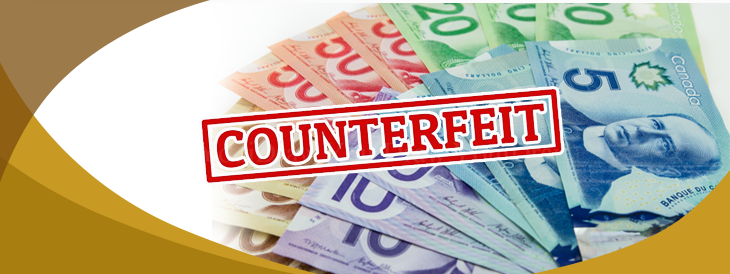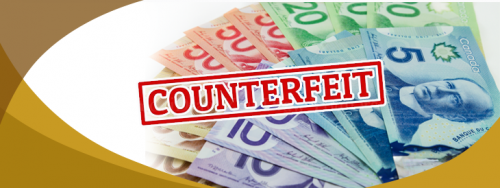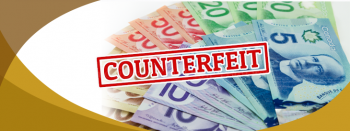Last updated on May 2nd, 2024 at 03:35 pm
Last Updated on May 2, 2024 Posted by Colonial Acres Coins
Counterfeiting is a very old and fraudulent practice that occurs not just in Canada but all over the world. It involves the act of making unauthorized (illegal) versions of legitimate items, such as money. Since the establishment of money as currency and its subsequent popularity in use the practice of counterfeiting has also become prevalent. It is important to arm yourself with knowledge so that when fraudsters try to create counterfeit versions of Canadian paper money, you can protect yourself.
If we work together, we can thwart the efforts of fraudsters who produce counterfeit paper notes by helping to keep them out of circulation.
Please understand that all recipients of cash are expected to check the notes being tendered to ensure that they are legitimate currencies. Reporting is very important in limiting the number of counterfeit currencies in circulation. If you suspect that you have received counterfeit currency you should report it to the police immediately. They will be able to determine whether your suspicions are true and may even be able to trace the notes back to the fraudsters who made them. Consider this a duty that every citizen has in the drive to keep counterfeit currencies out of circulation.
Canadian paper notes fall into two categories: polymer and Journey Series with the latter being the older type (which has been discontinued by the Bank of Canada and replaced with Polymer notes although they remain legal tender). As realistic as fake notes can sometimes appear to be, the scammers never get it quite right because both notes are embedded with intricate security features that counterfeiters are unable to replicate. These are the features you should look for when trying to determine if the note you are holding is really legal tender.
Seven Features of Genuine Canadian Polymer Currency
Raised Ink
The ink is raised on two sections (the shoulders of the portrait and the words ‘Bank of Canada’ in both translations) of polymer notes. You can sense the raised ink by looking and running your finger along the specified areas of $5, $10, $20, $50 and $100 notes.
Large Window
Another feature of the legitimate version of these notes is the large window which appears as a slightly irregular rectangular transparent space stretching from one end of the note to about a third of the length. This window contains two metallic images, one is a portrait and the other is a building. Look out for transparency in this window as a signal of the authenticity of the note.
Metallic Portrait
The metallic portrait on these notes helps to identify their legitimacy. The portraits may vary but the metallic appearance is a strong indicator to look out for when trying to determine if they are real. You should also check to ensure that the portraits on both sides of the note are identical.
Transparent Text
The word ‘Canada’ should be transparent in appearance and when you run a finger along it you should sense that it is slightly raised.
Metallic Building
In a genuine note, the metallic building that is located in the transparent window, below the portrait should take on sharp color changes when the note is tilted.
Maple Leaf border
A border of Maple leaves should encase the window on both sides and at some point, it should slightly invade the window.
Frosted Maple Leaf Window
Above the number on the front of the note, you should see a large maple leaf window. Observe this window for transparency and a frosted outline.
Always flip the note over to ensure that the security features reflect on the other side.
Six Security Features for the Journey Series Notes
- Brightly colored numbers and maple leaves that move and change to reflect rainbow colors within the metallic strip as you tilt the note
- A ghostlike replica of the image that appears when you hold the note to the light.
- A continuous solid light that shows up when the note is held up to the light along with shifting from gold to green (upon tilting) of the woven dashes of the thread on the back of the note.
- A merger of the irregular shapes on the front and back to create a number when the note is held up against the light.
- A raised portrait (detectable by sliding your finger over it paying close attention to the shoulders), large digits and the feeling of thickness on some parts of the note
- The text ‘BANK OF CANADA – BANQUE DU CANADA’ which appear under UV lighting along with merging green and yellow number that matches the note’s value.
Why a Trusted Dealer is Always the Best Option
The reputation of your dealer is always an important factor in all transactions involving Canadian paper money. With reputable dealers you are less likely to wind up with counterfeit notes since they have a reputation to protect and as such usually have systems and tools in place to identify fake notes.




